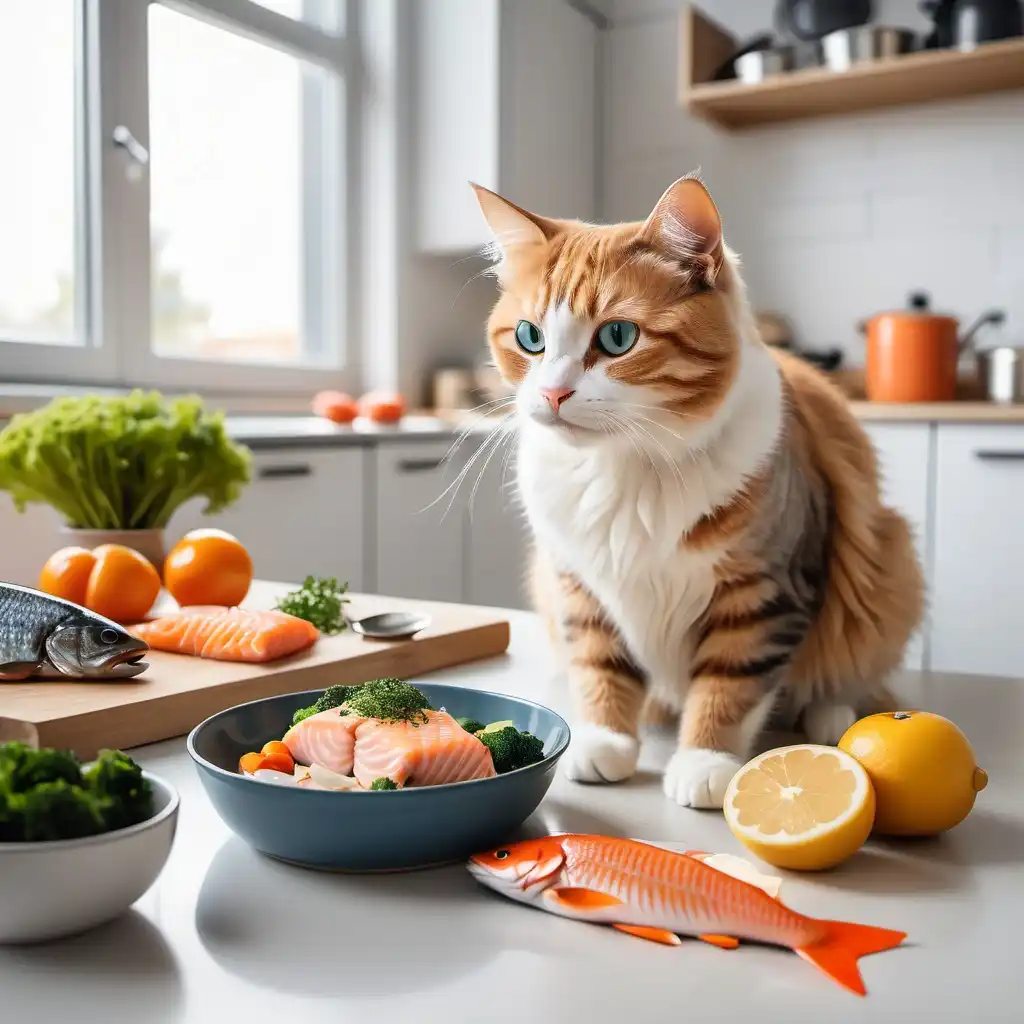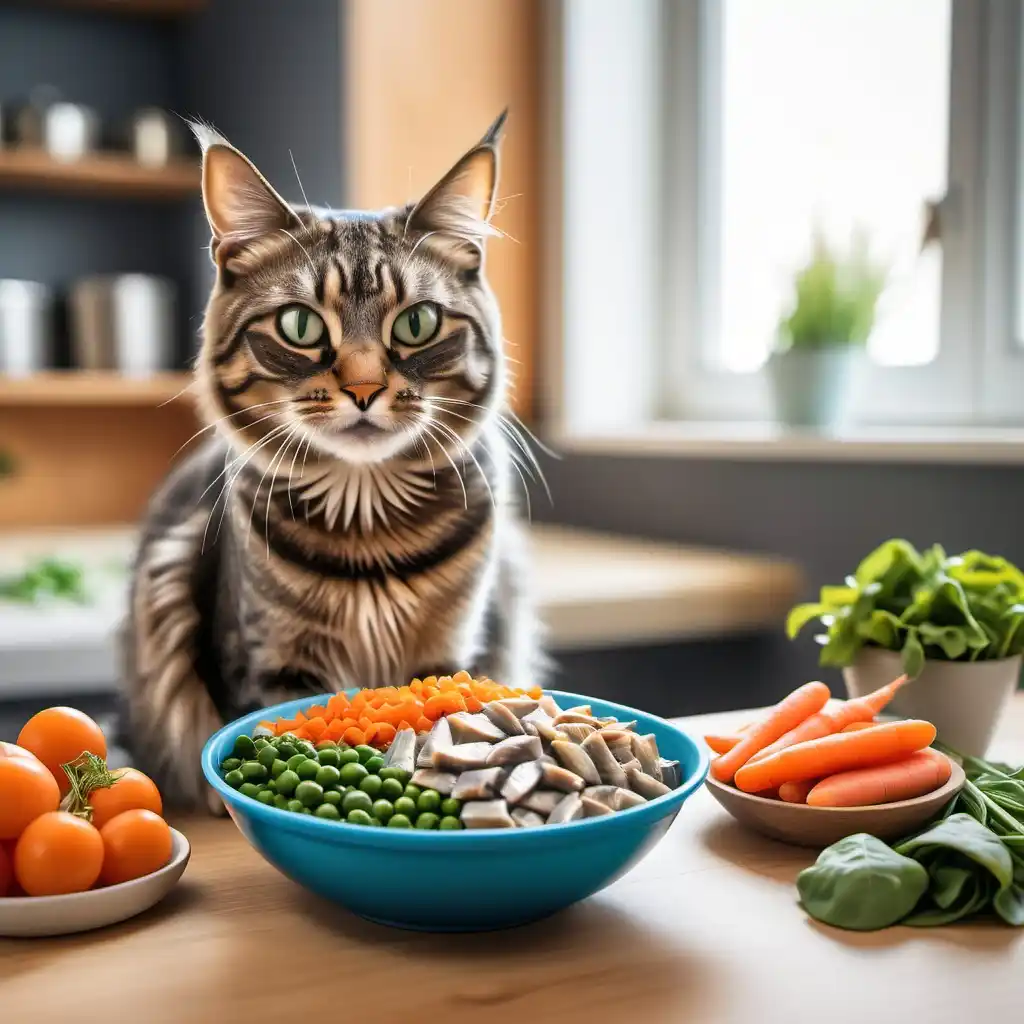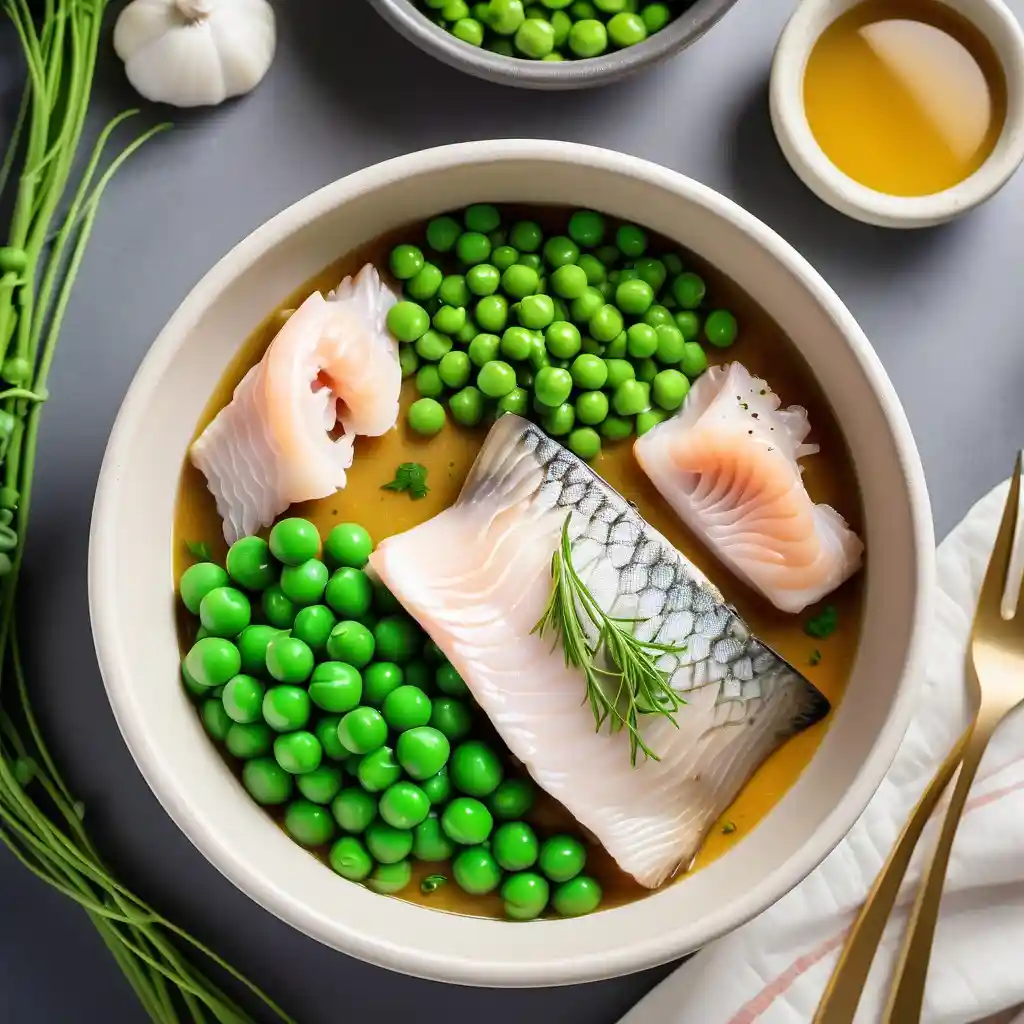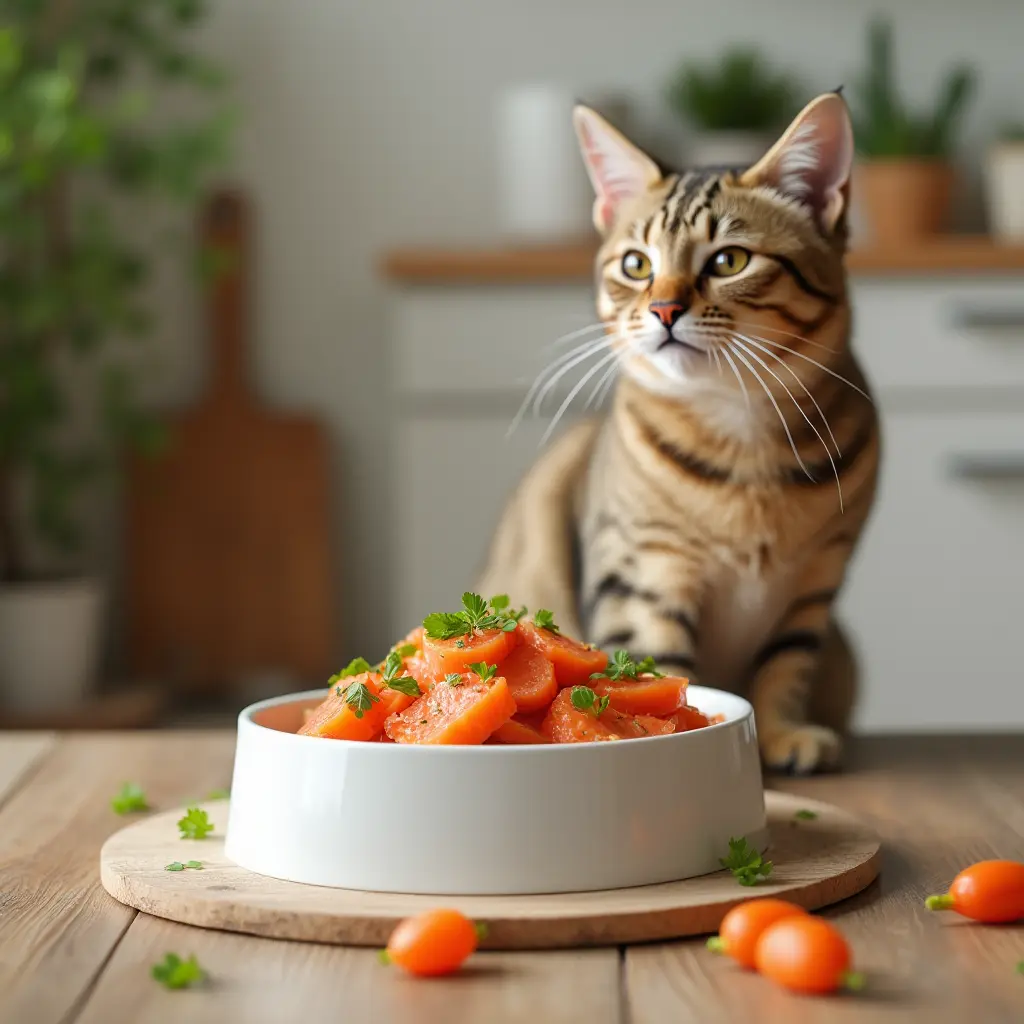Power-Packed DIY Fish Cat Food Recipes for Optimal Health
Fish cat food recipes are an excellent way to provide your beloved cat with fresh, wholesome meals. When you prepare cat food at home, you control the ingredients, ensuring your furry friend receives high-quality nutrition without unnecessary additives or preservatives. This guide covers delicious homemade recipes, the nutritional advantages of fish, and key tips for creating balanced meals.
Table of Contents
The Benefits of Including Fish in Your Cat’s Diet
Fish is a nutrient powerhouse for cats, offering:
- Omega-3 Fatty Acids: Support skin health, enhance coat shine, and help minimize inflammation.
- Lean Protein: Supports strong muscles and overall development.
- Essential Vitamins and Minerals: Including Vitamin D, B12, and iodine, vital for optimal feline health.
While fish can be beneficial, it’s important to maintain variety in your cat’s diet to prevent nutrient deficiencies. Feeding only fish can lead to imbalances and potential health issues.
Potential Concerns When Feeding Fish to Cats
Despite its nutritional value, fish can pose risks if not fed correctly:
- Mercury Exposure: Predatory fish like tuna can accumulate mercury. Offer tuna occasionally, not regularly.
- Thiaminase Enzyme: Raw fish contains thiaminase, which breaks down Vitamin B1, leading to deficiencies. Always cook fish before serving.
- Allergic Reactions: Some cats may develop sensitivities to fish, causing skin irritation or digestive problems.
- Nutritional Imbalance: Relying solely on fish can result in missing essential nutrients. Include a variety of protein sources for a balanced diet.
Simple and Healthy Homemade Fish Cat Food Recipes
1. Salmon Delight Meal: A Tasty Fish Cat Food Recipe

Ingredients:
- 1 cup cooked, boneless salmon
- 1/4 cup steamed, mashed carrots
- 1/4 cup cooked quinoa (unsalted)
- 1 teaspoon fish oil
Instructions:
- Flake the salmon into small pieces.
- Combine with mashed carrots and quinoa.
- Add fish oil and mix thoroughly.
- Serve fresh or refrigerate for up to three days.
Why It’s Great: This dish offers omega-3s for a healthy coat, fiber from carrots, and essential amino acids from quinoa.
2. Tuna & Pumpkin Mix: A Nutritious Fish Cat Food Recipe

Ingredients:
- 1 can of tuna in water (drained)
- 2 tablespoons plain pumpkin puree
- 1 boiled egg, mashed
- 1 teaspoon olive oil
Instructions:
- Blend the tuna with pumpkin puree and mashed egg.
- Stir in olive oil until evenly mixed.
- Serve immediately.
Health Benefits: Tuna is rich in lean protein, pumpkin aids digestion, and the egg adds vital nutrients like biotin.
3. Mackerel Energy Bowl: A Healthy Fish Cat Food Recipe

Ingredients:
- 1 cup cooked, boneless mackerel
- 1/4 cup cooked brown rice (unseasoned)
- 1/4 cup steamed, chopped spinach
- 1 teaspoon flaxseed oil
Instructions:
- Break mackerel into small chunks.
- Mix with brown rice and spinach.
- Drizzle flaxseed oil and blend well.
- Serve fresh or store in the fridge.
Why It’s Healthy: Mackerel provides omega-3s, brown rice offers fiber, and spinach adds vitamins A and K.
4. Sardine Treat Bowl: A Delicious Fish Cat Food Recipe

Ingredients:
- 1 can of sardines in water (drained)
- 1/4 cup mashed sweet potatoes
- 1 tablespoon plain Greek yogurt (unsweetened)
- 1/2 teaspoon chia seeds
Instructions:
- Mash sardines with sweet potatoes.
- Stir in Greek yogurt and chia seeds.
- Mix thoroughly and serve.
Health Benefits: Sardines are calcium-rich, sweet potatoes provide fiber, and chia seeds deliver antioxidants.
5. Cod & Green Pea Bowl: A Wholesome Fish Cat Food Recipe

Ingredients:
- 1 cup cooked, boneless cod
- 1/4 cup mashed peas (cooked)
- 1 tablespoon coconut oil
- 1 tablespoon ground flaxseed
Instructions:
- Flake the cod into small pieces.
- Combine with mashed peas.
- Add coconut oil and flaxseed, then mix well.
- Serve immediately.
Nutritional Value: Cod offers lean protein, peas supply plant-based nutrients, and flaxseed contributes healthy fats.
Nutritional Comparison Table
| Recipe Name | Protein (g) | Fat (g) | Fiber (g) | Omega-3 Content |
|---|---|---|---|---|
| Salmon Delight Meal | 20 | 10 | 2 | High |
| Tuna & Pumpkin Mix | 18 | 8 | 3 | Moderate |
| Mackerel Energy Bowl | 22 | 9 | 2 | High |
| Sardine Treat Bowl | 19 | 11 | 3 | Very High |
| Cod & Green Pea Bowl | 21 | 7 | 4 | Moderate |
Tips for Preparing Homemade Cat Food
- Consult Your Vet: Before changing your cat’s diet, get professional advice.
- Avoid Harmful Foods: Never include onions, garlic, chocolate, or grapes.
- Ensure Variety: Rotate protein sources for balanced nutrition.
- Ensure a constant supply of clean, fresh water.
- Proper Portions: Adjust servings based on your cat’s size and activity level.
- Observe Reactions: Monitor for signs of allergies or digestive issues when introducing new foods.
Transitioning to Homemade Cat Food
- Begin by blending a little homemade food with your cat’s usual diet.
- Gradually increase the homemade portion over a week.
- Keep an eye out for any negative reactions, like digestive issues.
- If your cat is hesitant, try different recipes or consult a vet for guidance.
Storing Homemade Cat Food
- Refrigeration: Store in airtight containers for up to three days.
- Freezing: Freeze portions for up to three months.
- Thawing: Defrost in the refrigerator overnight.
- Hygiene: Maintain cleanliness while preparing and storing food.

Frequently Asked Questions (FAQ)
1. Can I feed my cat fish daily?
Feeding fish occasionally is fine, but daily consumption can lead to nutrient imbalances. Aim for a varied diet.
2. Is raw fish safe for cats?
No, raw fish contains thiaminase, which can cause Vitamin B1 deficiency. Always serve cooked fish.
3. What types of fish are safest for cats?
Salmon, sardines, mackerel, cod, and light tuna are good choices. Ensure they are boneless and fully cooked.
4. How long can homemade cat food last?
Refrigerated meals last up to three days, while frozen portions can be stored for up to three months.
5. Are homemade fish recipes suitable for kittens?
Yes, but kittens have specific nutritional needs. Consult your vet to ensure the recipe is appropriate.
6. Do homemade cat foods require supplements?
Yes, supplements like taurine, calcium, and vitamin E are often necessary. Speak with your vet for recommendations.
7. How can I tell if my cat enjoys the food?
Signs include eager eating, purring during meals, and licking the bowl clean.
8. What should I do if my cat reacts poorly to homemade food?
If your cat shows signs of illness, such as vomiting or lethargy, discontinue the food and contact your vet immediately.
Preparing your own fish cat food recipes allows you to control your cat’s nutrition while offering fresh, tasty meals. With these easy recipes and feeding tips, your feline friend will enjoy both health and flavor in every bite.
How did the recipe turn out? What did you like or would change?
Awsoome !
This is really the content we need

